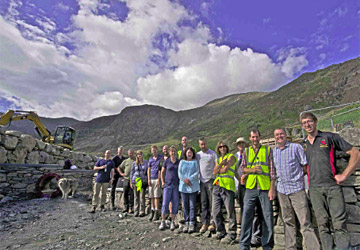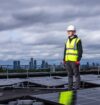Community Energy – Is it the way forward?
Think tank report suggests community-owned energy could improve UK
Britain lags behind in community-owned energy. In Germany, community energy accounts for 46% of all energy produced from renewables. Here in the UK we manage a dismal 0.3%. A new report by think tank ResPublica, in conjunction with the National Trust, suggests that community energy could grow to be up to a fifth of renewable electricity generation with the right policy framework and support.
The report has a case study of a tiny village in North Wales, Abergwyngregyn. The Gwynedd hamlet has a population of around 250 people and contains about 100 properties. Like many rural areas it has suffered the loss of local services including its pub and shops. The Abergwyngregyn Regeneration Company (ARC) was established in order to improve the social and economic wellbeing of residents. Over the past 10 years it has successfully developed a range of community projects, including the purchase and renovation of an old mill which now houses a café and community centre, annual summer and Christmas fairs and the management of two local car parks.
In 2011 the ARC started development of a community-managed hydroelectric scheme. This is intended to generate around 300KW with the main funding being delivered by a commercial lender and paid back over 5-10 years. Another project, The Talybont on Usk hydro scheme delivers an income of about £25,000 per year and enabled the creation of a small community fund providing grants to other projects in the village.

At the opposite end of the country, in urban Brixton, the Repowering London community initiative has raised £60,000 in funds from local small shareholders to build its third solar power array on a social housing estate. The two existing schemes, on Elmore House and Styles Gardens, use solar panels to power the communal areas of the estates such as corridor lighting and community halls, as well as being exported to the National Grid, and also provide training and work experience for young people in the area. The installed panels will generate about 135KW of electricity when Brixton Solar 3 is completed. Repowering London says its projects will generate a 3.0% estimated return each year for investors with 50% Tax relief from the Government’s Seed Enterprise Investment Scheme (SEIS) and provide 20% social return to the community fund, to help with further improvements to the estate.
Inside Housing magazine estimates that in 2020, based on the fact that community energy capacity has increased by over 1300% to nearly 60MW over the last decade, the sector will grow nine-fold to 550MW. This would provide gains to communities, particularly those that are in economically-depressed areas.
The report concludes “Community renewables schemes can deliver a range of social and economic benefits to local communities including increased autonomy, empowerment and resilience, opportunities for education, a strengthened sense of place, and an improved local economy.”
Report: The Economic and Social Benefits of Community Energy
Visit GreenJobs for the latest Renewable Energy Jobs.




